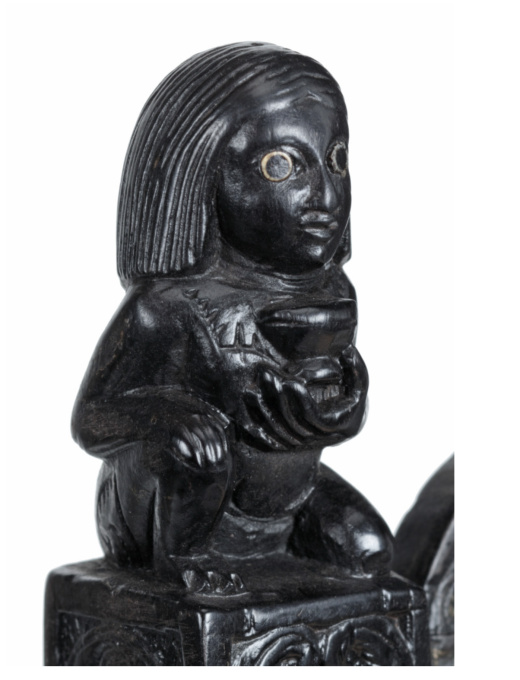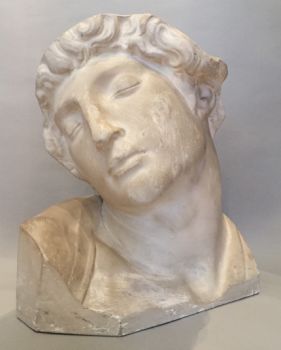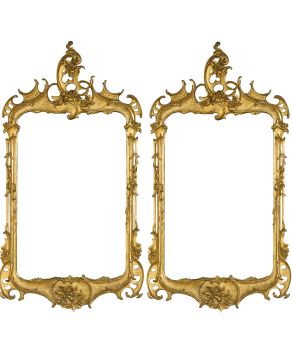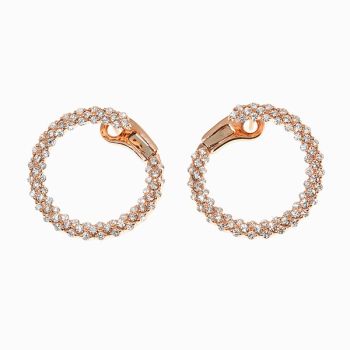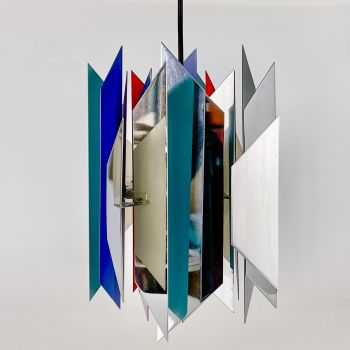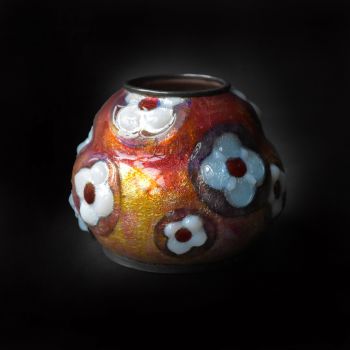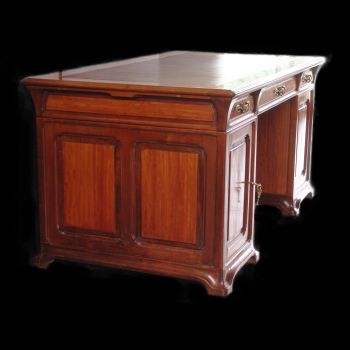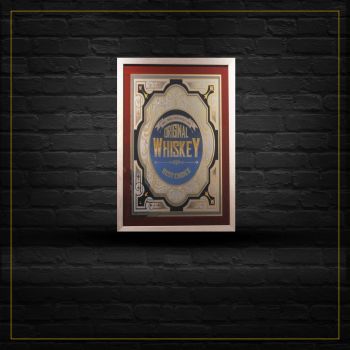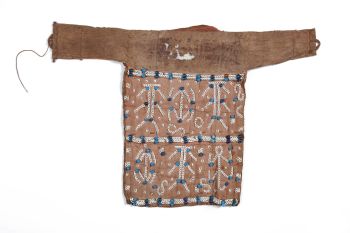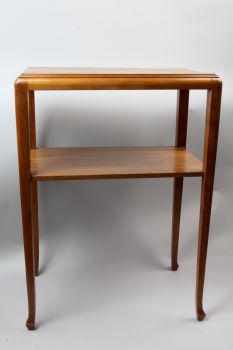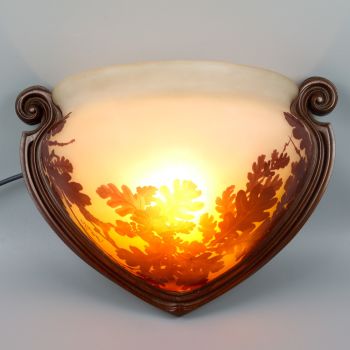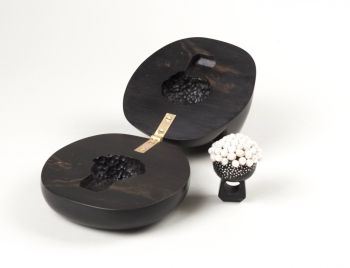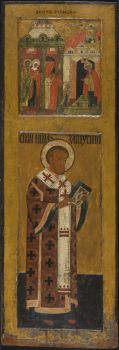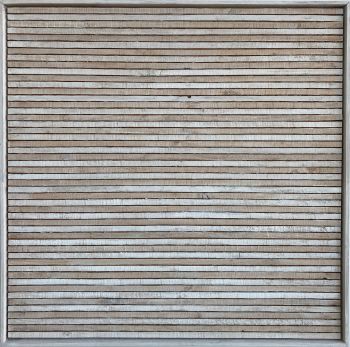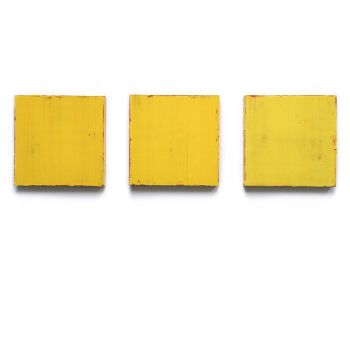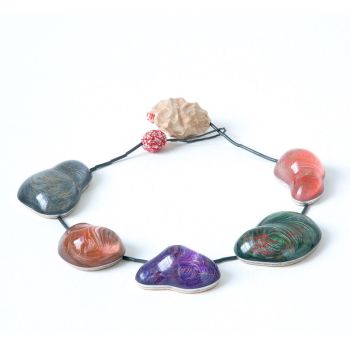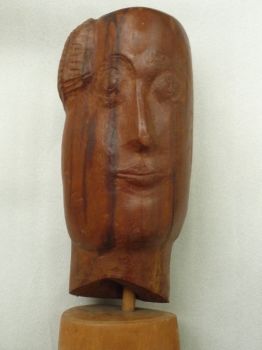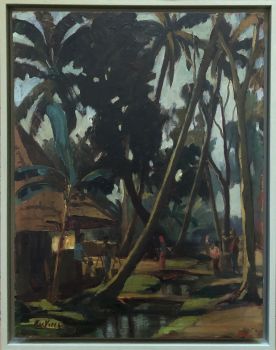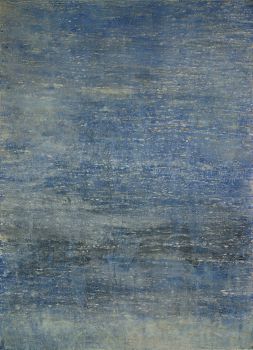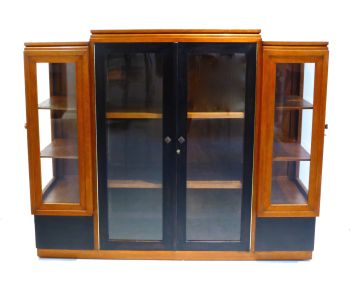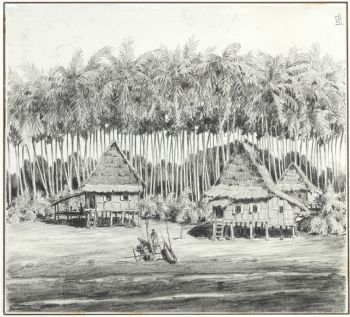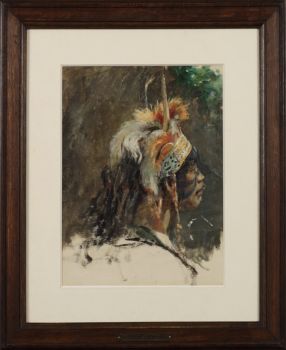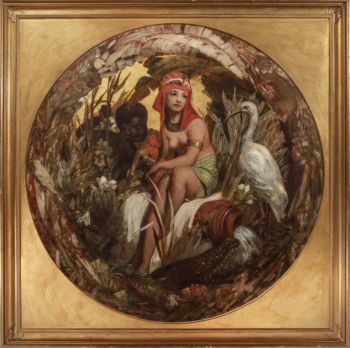An extraordinary pair of Indian ebony low chairs formerly owned by the Duke of Westminster Coromande 1680 - 1700
Unknown artist
EbonyWood
85 ⨯ 50 ⨯ 45 cm
Price on request
Zebregs & Röell - Fine Art - Antiques
- About the artworkAn extraordinary pair of Indian ebony low chairs formerly owned by the Duke of Westminster
Coromandel coast, possibly Madras, 1680-1700
Both overall densely carved with an array of mermaids, birds, fish, mythological figures and floral and vine motifs, the back-rails are centered by a parrot (the attribute of Kama, the Hindu god of love) below a scallop shell (an attribute of Aphrodite/Venus) with a fleur-de-lis (a symbol of the Virgin Mary), the shell supported by two small human figures and a pair of mermaids, another Western element, but also a representation of the Hindu snake goddess Nagini, with crouching figures as finials, reminiscent of deity figures, with cane seatings.
H. 85 x W. 50.5 x D. 45 cm
Height of seat 41.5 cm
An identical chair is illustrated in Het Hollandsche Koloniale Barokmeubel, Dr. V. I. van de Wall, .1939, fig. 26. The Provenance of that chair is given as the Duke of Westminster, Eaton Hall, Chester. Before restoration the present pair had identical upholstered seats and the same casters as the chair of the Duke of Westminster. Therefore it seems safe to assume that the provenance of the present pair also is the Duke of Westminster, Eaton Hall in Chester. In the seat rails of the present chairs both are numbered II and III respectively, so they probably once belonged to a larger set in Eaton Hall.This type of chair usually turns up in England and seldom in Holland although they were also ordered by the Dutch on the Coromandel Coast of India. Possibly the Hindu motives of animals and humans in the carvings of these “Kust stoelen” were eventually not greatly appreciated in Muslin/Calvinist Java/Batavia. These high points in ebony furniture making were made by Hindu craftsmen in South India converted to Roman Catholicism by the Portuguese in the 16th and 17th centuries. These furniture makers, with their origins in the Hindu world, combined Hindu and Christian motives in a manner which was not seen again in furniture from India after the 17th century.
As in other known examples, the carving is in the round. The carvings on these two chairs bear close resemblance to the carving of the head- and foot-boards of the ebony rocking cradle in the Rijksmuseum Amsterdam (BK-1966-48, illustrated in: Asia in Amsterdam, 2015, cat. 26, p.108). - About the artist
It might happen that an artist or maker is unknown.
Some works are not to be determined by whom it is made or it is made by (a group of) craftsmen. Examples are statues from the Ancient Time, furniture, mirroirs, or signatures that are not clear or readible but as well some works are not signed at all.
As well you can find the following description:
•“Attributed to ….” In their opinion probably a work by the artist, at least in part
•“Studio of ….” or “Workshop of” In their opinion a work executed in the studio or workshop of the artist, possibly under his supervision
•“Circle of ….” In their opinion a work of the period of the artist showing his influence, closely associated with the artist but not necessarily his pupil
•“Style of ….” or “Follower of ….” In their opinion a work executed in the artist’s style but not necessarily by a pupil; may be contemporary or nearly contemporary
•“Manner of ….” In their opinion a work in the style of the artist but of a later date
•“After ….” In their opinion a copy (of any date) of a work of the artist
•“Signed…”, “Dated….” or “Inscribed” In their opinion the work has been signed/dated/inscribed by the artist. The addition of a question mark indicates an element of doubt
•"With signature ….”, “With date ….”, “With inscription….” or “Bears signature/date/inscription” in their opinion the signature/ date/ inscription has been added by someone other than the artist
Are you interested in buying this artwork?
Artwork details
Related artworks
Artista Desconocido
Pair of 19th C French Taxidermy Dioramas1860 - 1890
Precio a consultarSpectandum Gallery
1 - 4 / 12Artista Desconocido
UN RARO TELESCOPIO DE CUERO LACADO JAPONÉS GRANDE1750 - 1800
Precio a consultarZebregs & Röell - Fine Art - Antiques
Artista Desconocido
A Dutch colonial Indonesian betel box with gold mounts1750 - 1800
Precio a consultarZebregs & Röell - Fine Art - Antiques
Artista Desconocido
The Stamford Raffles Secretaires.1800 - 1813
Precio a consultarZebregs & Röell - Fine Art - Antiques
1 - 4 / 24Joseph Savart
Four portraits of women of Guadeloupe1769
Precio a consultarZebregs & Röell - Fine Art - Antiques
1 - 1 / 1 curada por
curada porGallerease Magazine
1 - 4 / 24Artista Desconocido
PAREJA DE ANTORCHAS O VELAS DE TECA DORADA Y LACADA INDONESIA18th century
Precio a consultarZebregs & Röell - Fine Art - Antiques
Artista Desconocido
Japanese transition-style lacquer coffer 1640 - 1650
Precio a consultarZebregs & Röell - Fine Art - Antiques
Eduard Charlemont
‘Allegories of Africa and America’1872
Precio a consultarZebregs & Röell - Fine Art - Antiques
1 - 4 / 12



